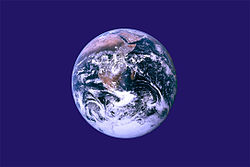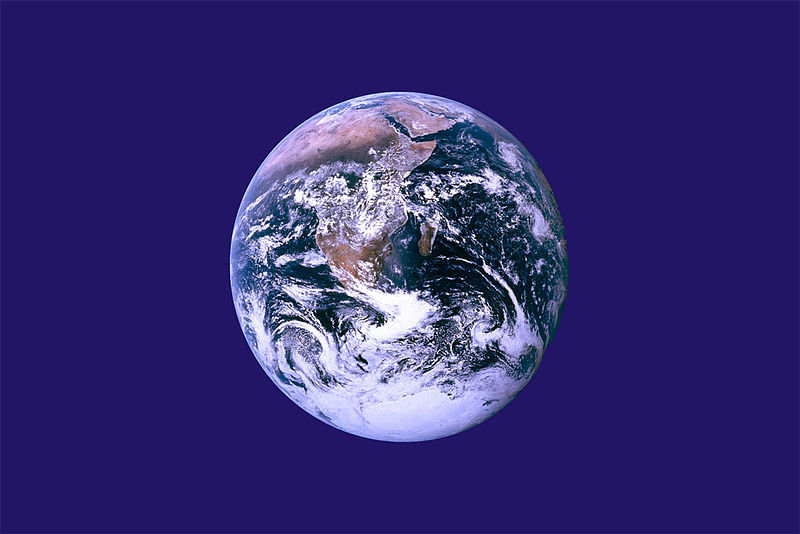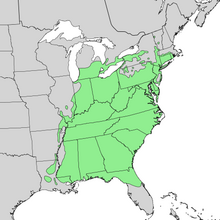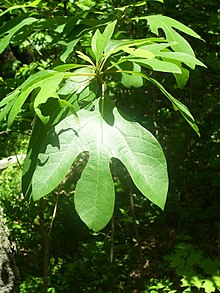

Hi Everybody!!
Earth Day is coming on April 22. If you have never celebrated this day before, I am asking You to join in this year by planting a tree, or shrub or flower. Time for everyone to dig in the dirt! The fact is: the Green House Gas (CO2), harmful in the atmosphere, is absorbed by the forests on earth. What do humans do? Cut down the forests. We are among the most stupid of species on Earth. Humans are incapable of working together as a team for things which are beneficial to us. As example, I am going to plant 10 trees on Earth Day. Is that going to assist removal of CO2 from the atmosphere? No. However, if everyone on Earth were to plant 10 trees, we could reverse the Global Warming effects on Earth. How do you get everybody to dig in the dirt? Nobody has found that answer yet! I am 'Good to Go' with my 10 little trees. How about You? Enjoy!

https://plus.google.com/u/0/photos/117645114459863049265/albums/6000475386615038753


Double White Climbing Rose
CELEBRATE!!!
https://en.wikipedia.org/wiki/Earth_Day
Earth Day
From Wikipedia, the free encyclopedia
Earth Day is an annual event, celebrated on April 22, on which events are held worldwide to demonstrate support for environmental protection. It was first celebrated in 1970, and is now coordinated globally by the Earth Day Network,[1] and celebrated in more than 192 countries each year.[2]
In 1969 at a UNESCO Conference in San Francisco, peace activist John McConnell proposed a day to honor the Earth and the concept of peace, to first be celebrated on March 21, 1970, the first day of spring in the northern hemisphere. This day of nature's equipoise was later sanctioned in a Proclamation written by McConnell and signed by Secretary General U Thant at the United Nations. A month later a separate Earth Day was founded by United States Senator Gaylord Nelson as an environmentalteach-in first held on April 22, 1970. Nelson was later awarded the Presidential Medal of Freedom Award in recognition of his work.[3] While this April 22 Earth Day was focused on the United States, an organization launched by Denis Hayes, who was the original national coordinator in 1970, took it international in 1990 and organized events in 141 nations.[4][5] Numerous communities celebrate Earth Week, an entire week of activities focused on environmental issues.

The Earth Day Flag created by John McConnell
Results of Earth Day 1970
The first Earth Day family had participants and celebrants in two thousand colleges and universities, roughly ten thousand primary and secondary schools, and hundreds of communities across the United States. More importantly, it "brought 20 million Americans out into the spring sunshine for peaceful demonstrations in favor of environmental reform."[6] It now is observed in 192 countries, and coordinated by the nonprofit Earth Day Network, chaired by the first Earth Day 1970 organizer Denis Hayes, according to whom Earth Day is now "the largest secular holiday in the world, celebrated by more than a billion people every year."[7] Environmental groups have sought to make Earth Day into a day of action which changes human behavior and provokes policy changes.[8]
History of the Equinox Earth Day (March 20)
The equinoctial Earth Day is celebrated on the March equinox (around March 20) to mark the precise moment of astronomical spring in the Northern Hemisphere, and of astronomical autumn in the Southern Hemisphere. An equinox in astronomy is that point in time (not a whole day) when the Sun is directly above the Earth's equator, occurring around March 20 and September 23 each year. In most cultures, the equinoxes and solstices are considered to start or separate the seasons.
John McConnell[24] first introduced the idea of a global holiday called "Earth Day" at the 1969 UNESCO Conference on the Environment. The first Earth Day proclamation was issued by San Francisco Mayor Joseph Alioto on March 21, 1970. Celebrations were held in various cities, such as San Francisco and in Davis, California with a multi-day street party. UN Secretary-General U Thant supported McConnell's global initiative to celebrate this annual event; and on February 26, 1971, he signed a proclamation to that effect, saying:
May there be only peaceful and cheerful Earth Days to come for our beautiful Spaceship Earth as it continues to spin and circle in frigid space with its warm and fragile cargo of animate life.[25]
United Nations secretary-general Kurt Waldheim observed Earth Day with similar ceremonies on the March equinox in 1972, and the United Nations Earth Day ceremony has continued each year since on the day of the March equinox (the United Nations also works with organizers of the April 22 global event). Margaret Mead added her support for the equinox Earth Day, and in 1978 declared:
"Earth Day is the first holy day which transcends all national borders, yet preserves all geographical integrities, spans mountains and oceans and time belts, and yet brings people all over the world into one resonating accord, is devoted to the preservation of the harmony in nature and yet draws upon the triumphs of technology, the measurement of time, and instantaneous communication through space.
Earth Day draws on astronomical phenomena in a new way – which is also the most ancient way – by using the vernal Equinox, the time when the Sun crosses the equator making the length of night and day equal in all parts of the Earth. To this point in the annual calendar, EARTH DAY attaches no local or divisive set of symbols, no statement of the truth or superiority of one way of life over another. But the selection of the March Equinox makes planetary observance of a shared event possible, and a flag which shows the Earth, as seen from space, appropriate."[26]
At the moment of the equinox, it is traditional to observe Earth Day by ringing the Japanese Peace Bell, which was donated by Japan to the United Nations.[27] Over the years, celebrations have occurred in various places worldwide at the same time as the UN celebration. On March 20, 2008, in addition to the ceremony at the United Nations, ceremonies were held in New Zealand, and bells were sounded in California, Vienna, Paris, Lithuania, Tokyo, and many other locations. The equinox Earth Day at the UN is organized by the Earth Society Foundation.[28]
Earth Day ringing the peace bell is celebrated around the world in many towns, ringing the Peace Bell in Vienna,[29]Berlin, and elsewhere. A memorable event took place at the UN in Geneva, celebrating a Minute for Peace ringing the Japanese Shinagawa Peace Bell with the help of the Geneva Friendship Association and the Global Youth Foundation,[30] directly after in deep mourning about the Fukushima Daiichi Nuclear Power Plant catastrophe 10 days before.
Beside the Spring Equinox for the Northern Hemisphere, the observance of the Spring Equinox for the Southern Hemisphere is of equal importance ! It is a "new sign of hope" for Peace that the International Day of Peace[31] is celebrated on the Spring Equinox of the South! right along the original intentions of John McConnell, U-Thant, Muller, Mead,...
The "Earth Day Anthem" below satisfies these requirements for a universal song associated with Earth Day. Ludwig van Beethoven's "Ode to Joy" melody is already the official anthem of the European Union (in that case purely instrumental without lyrics), the melody is widely recognized and easily performed, in the public domain, and originally composed for voice. Lyrics for the Earth Day Anthem set to "Ode to Joy"[45] are provided below:
Joyful joyful we adore our Earth in all its wondermentSimple gifts of nature that all join into a paradiseWe make our home a newborn world
Now we must resolve to protect her
Show her our love throughout all time
With our gentle hand and touch
We make our home a newborn world
Now we must resolve to protect her
Show her our love throughout all time
With our gentle hand and touch



Eastern Redbud leaves

Forest Pansy Redbud leaves

Formosa Azaleas

Loblolly Pine needles
https://en.wikipedia.org/wiki/Pinus_taeda
| Pinus taeda | |
|---|---|
 | |
| Characteristic appearance of loblolly pines, south Mississippi, USA | |
| Conservation status | |
| Scientific classification | |
| Kingdom: | Plantae |
| Class: | Pinopsida |
| Order: | Pinales |
| Family: | Pinaceae |
| Genus: | Pinus |
| Subgenus: | Pinus |
| Species: | P. taeda |
| Binomial name | |
| Pinus taeda L. | |
 | |
| Natural range of loblolly pine | |


https://plus.google.com/u/0/photos/117645114459863049265/albums/6000465039378063985
https://en.wikipedia.org/wiki/Liriodendron_tulipifera
| Liriodendron tulipifera | |
|---|---|
 | |
| Liriodendron tulipifera cultivated at Laken Park in Belgium | |
| Scientific classification | |
| Kingdom: | Plantae |
| (unranked): | Angiosperms |
| (unranked): | Magnoliids |
| Order: | Magnoliales |
| Family: | Magnoliaceae |
| Genus: | Liriodendron |
| Species: | L. tulipifera |
| Binomial name | |
| Liriodendron tulipifera L. | |
 | |
| Range | |
Liriodendron tulipifera — known as the tulip tree, American tulip tree,tuliptree, tulip poplar, whitewood, fiddle-tree, and yellow poplar — is theWestern Hemisphere representative of the two-species genus Liriodendron, and the tallest eastern hardwood. It is native to eastern North America from SouthernOntario and Illinois eastward across southern New England and south to centralFlorida and Louisiana. It can grow to more than 50 m (165 feet) in virgin cove forests of the Appalachian Mountains, often with no limbs until it reaches 25–30 m (80–100 feet) in height, making it a very valuable timber tree. It is fast-growing, without the common problems of weak wood strength and short lifespan often seen in fast-growing species. April marks the start of the flowering period in the southern USA (except as noted below); trees at the northern limit of cultivation begin to flower in June. The flowers are pale green or yellow (rarely white), with an orange band on the tepals; they yield large quantities of nectar. The tulip tree is the state tree of Indiana, Kentucky, and Tennessee.

File:Liriodendron tulipifera tulip close.jpg
From Wikipedia, the free encyclopedia


https://en.wikipedia.org/wiki/Pistacia_chinensis
Pistacia chinensis
From Wikipedia, the free encyclopedia


https://en.wikipedia.org/wiki/Quercus_shumardii
Quercus shumardii, the Shumard Oak, Spotted Oak, Schneck Oak,Shumard Red Oak, or Swamp Red Oak, is one of the largest of the oakspecies in the red oak group (Quercus section Lobatae). It is closely related toTexas Red Oak (Quercus buckleyi), Nuttall's Oak (Quercus texana), and Chisos Red Oak (Quercus gravesii).


https://plus.google.com/u/0/photos/117645114459863049265/albums/6000478557233509313

peach

white azalea

dogwood tree blossom


Sassafras Tree

https://en.wikipedia.org/wiki/Sassafras
Sassafras
From Wikipedia, the free encyclopedia
| Sassafras | |
|---|---|
 | |
| Sassafras albidum, Wanaque, New Jersey | |
| Scientific classification | |
| Kingdom: | Plantae |
| Division: | Angiosperms |
| Class: | Magnoliids |
| Order: | Laurales |
| Family: | Lauraceae |
| Genus: | Sassafras J.Presl |
Overview[edit]
Sassafras trees grow from 9–18 m (30–59 ft) tall and spreading 7.5–12 m (25–39 ft).[4] The trunk grows 70–150 cm (28–59 in) in diameter, with many slender branches, and smooth, orange-brown bark. The branching is sympodial. The bark of the mature trunk is thick, red-brown, and deeply furrowed. The wood is light, hard, and sometimes brittle. All parts of the plants are very fragrant. The species are unusual in having three distinct leaf patterns on the same plant, unlobed oval, bilobed (mitten-shaped), and trilobed (three-pronged); the leaves are hardly ever five-lobed.[5] They have smooth margins and grow 7–20 cm long by 5–10 cm broad. The young leaves and twigs are quite mucilaginous, and produce a citrus-like scent when crushed. The tiny, yellow flowers are five-petaled, and bloom in the spring; they are dioecious, with male and female flowers on separate trees. The fruit are blue-black, egg-shaped, 1 cm long, produced on long, red-stalked cups, and mature in late summer.[1] The largest sassafras tree in the United States is located in Owensboro, Kentucky, which measures over 100 feet high and 21 feet in circumference.[6][7]
Ecology
Most of the Lauraceae are aromatic, evergreen trees or shrubs adapted to high rainfall and humidity. But the Sassafrasgenus and one or two other[which?] genera in Lauraceae are deciduous. It is a phenomenon of divergent evolution from the large evergreen trees, to occupy another ecological niche.
Deciduous sassafras trees lose all of their leaves for part of the year, depending on variations in rainfall.[citation needed]In deciduous tropical Lauraceae, leaf loss coincides with the dry season in tropical, subtropical and arid regions. Intemperate climates, the dry season is due to the inability of the plant to absorb water available to it only in the form of ice.[citation needed]
Sassafras is commonly found in open woods, along fences, or in fields. It grows well in moist, well-drained, or sandy loam soils and tolerates a variety of soil types, attaining a maximum in southern and wetter areas of distribution.
In Sassafras, the dispersal of seeds is due to birds that swallow them, so the berries' shape is attractive to birds. The fruits are an important food source for birds.
Importance to livestock and wildlife[edit]
Sassafras leaves and twigs are consumed by white-tailed deer in both summer and winter. In some areas, it is an important deer food.[10] Sassafras leaf browsers include groundhogs, marsh rabbits, and American black bears.[10] Rabbits eat sassafras bark in winter.[10] American beavers will cut sassafras stems.[10]Sassafras fruits are eaten by many species of birds, including bobwhite quail,[10] eastern kingbirds, great crested flycatchers, phoebes, wild turkeys, gray catbirds, northern flickers, pileated woodpeckers, downy woodpeckers,thrushes, vireos, and northern mockingbirds. Some small mammals also consume sassafras fruits.[10]
For most of the above-mentioned animals, sassafras is not consumed in large enough quantities to be important. Carey and Gill rate its value to wildlife as fair, their lowest rating.[10]

S. albidum is a host plant for thespicebush swallowtail.
Ethnobotanical history[edit]
Numerous Native American tribes used sassafras for medicinal purposes and to ward off evil spirits. Since then, scientists have found that the oil, roots and bark have analgesic and antiseptic properties. It has been used to treat
"scurvy, skin sores, kidney problems, toothaches, rheumatism, swelling, menstrual disorders and sexually transmitted diseases, bronchitis, hypertension, and dysentery. It is also used as a fungicide, dentifrice, rubefacient, diaphoretic, perfume, carminative and sudorific."[13]
During the establishment of the Virginia Colony, including Jamestown in the 17th century, sassafras was a major export commodity to England. A medicinal root thought to be effective in treating ague (fevers) and STD, with wood was prized for its beauty and durability, sassafras was popular in England from its first import by Sir Walter Raleigh in 1602 until the 18th century.[14]
Exploration for sassafras was the catalyst for the 1603 commercial expedition from Bristol of Captain Martin Pring to the coasts of present-day Maine, New Hampshire and Massachusetts, and his two ships returned with some.[14] During a brief period in the early 17th century, sassafras was the second-largest export from America behind tobacco. Additionally, throughout history, sassafras wood has been found to be an excellent fire-starter because of the flammability of its natural oils found within the wood and the leaves.
Link for Homemade Rootbeer:
http://www.simplyrecipes.com/recipes/homemade_sassafras_root_beer/



...this is brendasue signing off from Rainbow Creek. See You next time!! Enjoy your Earth!


https://plus.google.com/u/0/photos/117645114459863049265/albums/6000460793439400801
O+O



No comments:
Post a Comment
Hi Everybody! Please say hello and follow so I know you are here! Due to the inconsideration of people trying to put commercials on my blog comment area, I have restricted use of anonymous posts. Sorry that some hurt all.
My public email is katescabin@gmail.com No spammers or trolls